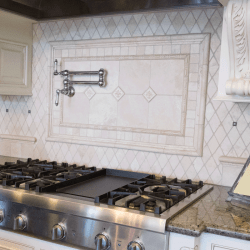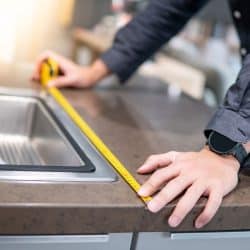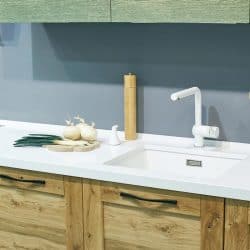When you first design your kitchen, you're faced with several decisions to make. Not only do you have to choose what cabinets and countertops you want throughout your space, but you also need to determine how your appliances will interact with those features. With that in mind, you may find yourself asking: should a dishwasher be flush with your cabinets and countertops? We've researched this to find the answer for you.
While your dishwasher does not have to be flush with the cabinets and countertops, there are benefits to the parallel installation. A flushed dishwasher makes it easier to maneuver through your kitchen, creates a cohesive look within the space, and prevents unanticipated plumbing challenges.
If you have an unusually-shaped kitchen or want to experiment with your overall arrangement, never fear. We've discovered some tips and tricks that can help you keep your dishwasher flush with your cabinet and countertops—or experiment with the look of your kitchen entirely. Read on to learn about dishwasher installation, your appliance options, and the kitchen quirks that can help you create a sense of unity throughout the room.

Should A Dishwasher Be Flush With Cabinets And Countertop?
Your kitchen is a space that you can make entirely your own. That said, some organizational traditions tend to find their way into every home. For example, in most spaces, you'll find that a kitchen's dishwasher ends up flush with its cabinets and countertop.
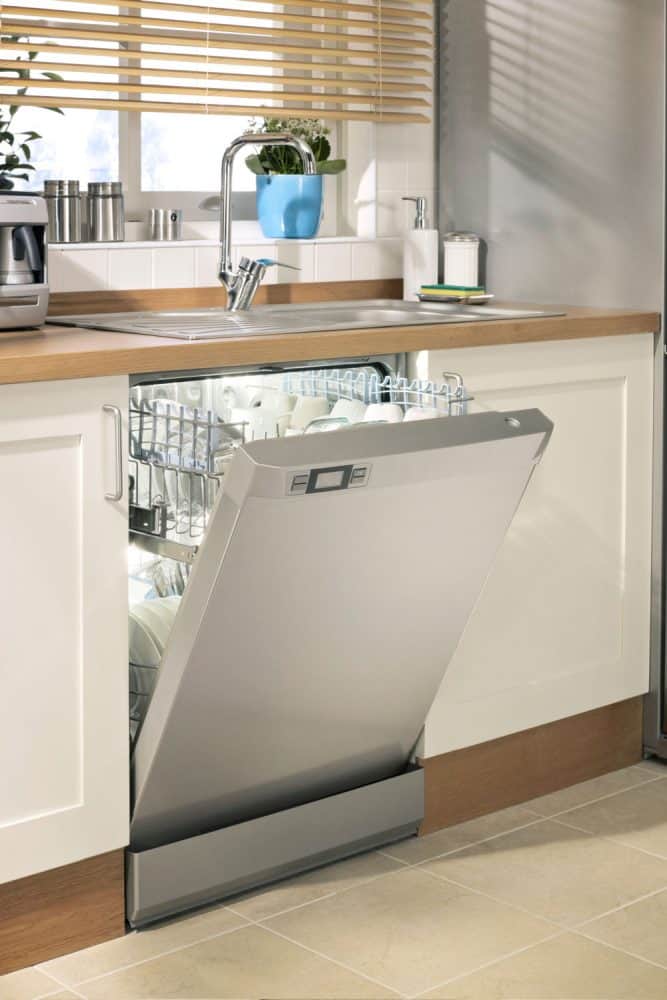
If you have a freestanding dishwasher that you want to be positioned beneath your countertop and next to your cabinets, it's best to find a unit that suits your home's dimensions. It's not the end of the world if you have gaps between your dishwasher and cabinets, though. There are ways to fill those gaps, ensuring that you have the dishwasher model you want and a cohesive kitchen.
Installing Your Dishwasher
Your dishwasher is one of the only appliances you'll want to install at the same time or even before your cabinets and countertops. With that in mind, consider the benefits of planning out your installation process.
Not only will preplanning help you get ahead of installation hiccups, but you can also measure your dishwasher against cabinet and countertop additions to ensure that all of your kitchen's new elements are equal in height and width.
To kick off your dishwasher installation process, you can:
Choose Your Initial Position
Before you ever bring a new dishwasher into your home, measure out the place where you want it to rest. When you have the dimensions of your available space locked down, you can keep yourself from purchasing a unit that won't fit in your kitchen. You'll also want to give yourself enough room to open and close the dishwasher door.
Experiment With Dry Fitting
Once you've brought your dishwasher home, unwrap it and prepare it for a dry fitting. Dry fitting refers to the process by which you fit your dishwasher to its anticipated space without hooking up any of its accessories.
This process lets you determine the size of any potential gaps before the installation is any more difficult to reverse. A dry fitting also gives you the time you need to purchase any gap-filling materials you may need to prevent damage to your unit.
You can also use the dry fitting phase to determine how much room you'll have to work on the dishwasher during the installation process. If it looks as though the dishwasher fits too perfectly into its anticipated space, move it out an inch to more easily complete your initial hook-ups.
Explore Your Filler Options
As mentioned, there are a few different materials that you can use to fill the gaps between your dishwasher and the rest of your kitchen's accessories. You can work on your own or with a local professional to determine whether wood, plastic, or another kind of filler might best suit your intentions for your home.
Seek Out Professional Wiring
From here, you can hook up the dishwasher as you would normally. Attach the water and electric lines before pushing the dishwasher flush against the wall where you want it to rest. Do what you can to keep all pipes as flat and straight as possible for ease of use.
Fit Your Accessories Accordingly
If your dishwasher comes equipped with any accessories, including its door, do not attach them until you've completed your installation.
Leaving the door and other accessories, including any internal racks, out until your installation is complete will make your dishwasher easier to maneuver during the earlier phases of the process.
How Do You Close the Gap Between Cabinets and the Dishwasher?
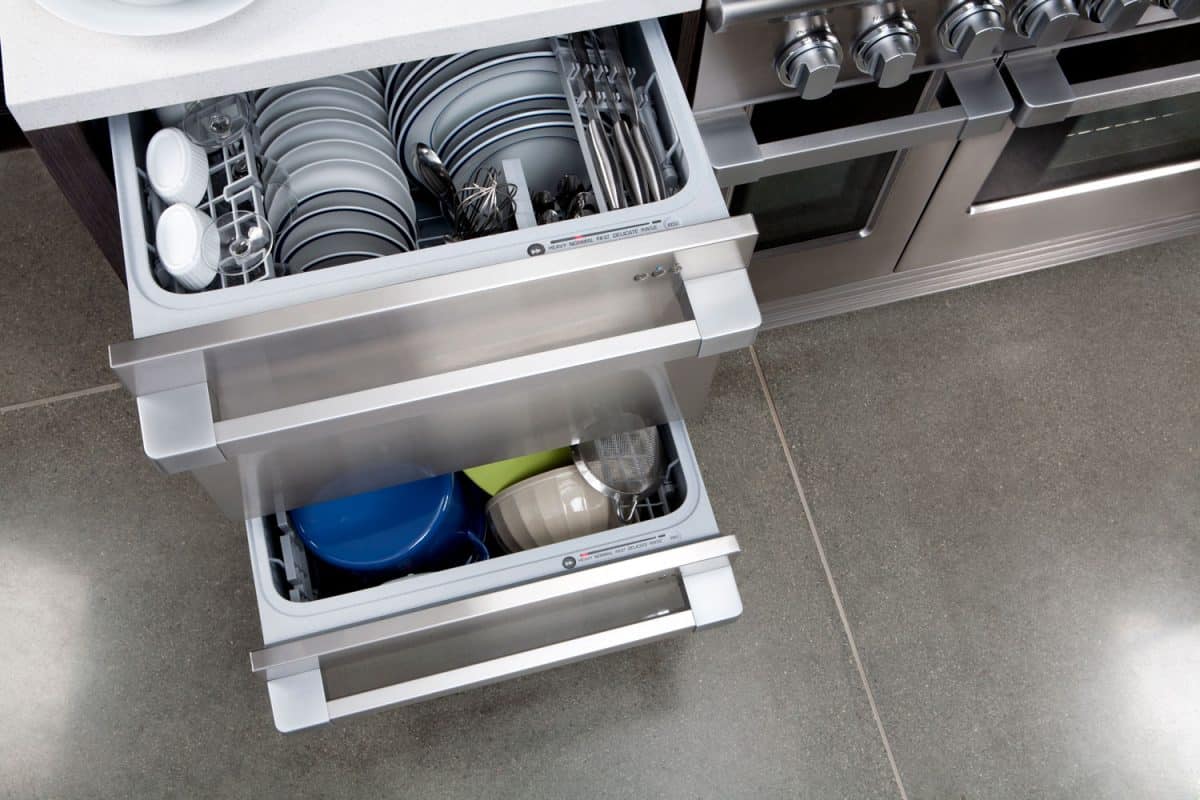
You can fill the spaces between your cabinets, countertop, and dishwasher in a few different ways. Some of your best strategies include:
Filling the Space With Filler Strips
If you're concerned about the open space on either side of your dishwasher, plastic filler strips are your best friend. These plastic strips are readily available at your local home improvement store and designed to prevent damage to both your unit and other kitchen accessories.
To fill the space between your dishwasher and cabinets, cut the plastic filler strips so that they're the same dimensions as your gaps. You can paint the strips before placing them over the gap, thereby creating the illusion of cohesion between your cabinets and dishwasher. Once the paint has dried, carefully attach the filler strip to your gap with brackets or Gorilla Glue.
Turning to Two by Fours
If you'd rather not use filler strips, you can always fill the space between your dishwasher and the rest of your kitchen's accessories with spare wood. You'll want to try and find wood that is both water-resistance treated and well-suited to the gaps between your appliances.
Filling this space with leftover wood that isn't treated can result in splinters later down the line. Once you have the right kind of wood to fit next to your dishwasher, though, you can secure your pieces with wood glue and paint the sides facing the rest of your kitchen. When it comes time to run your dishwasher, the wood will hold your unit in place and prevent damage to cabinets, countertop, and dishes.
Should the Dishwasher be Installed Before Countertops?
Your countertop is the final piece that brings your kitchen together. That said, you'll need certain appliances in place if you intend to make your countertop installation as simple as possible.
It's in your best interest to install your dishwasher before placing your countertops. You can do this for two reasons.
For starters, you'll need to ensure that your dishwasher isn't taller than the rest of your cabinets. If you've invested in cabinetry that's too short or too tall, you risk destabilizing your countertop with a wrong-height dishwasher.
You can fill the gaps between your dishwasher and cabinet, of course. That said, it may be cheaper and safer for you to find alternative cabinets instead.
Similarly, your dishwasher requires some unique work prior to its proper use. When you first install your dishwasher, you'll need to attach it to the dishwasher bracket behind your cabinets. This is much harder to do, if not impossible when your cabinet is already in place.
Is There Such a Thing as a Portable Dishwasher?
There is such a thing as a portable dishwasher. These units are smaller than the average stationary model and are meant for both travel and residential living.
Models come equipped with wheels but still tend to cap out at 24 inches in height. You'll still need to connect your model to your home plumbing, but you're also free to take the unit with you when you move or remodel.
You can find portable dishwashers like this one on Amazon.
Can a Dishwasher Go Under the Sink?
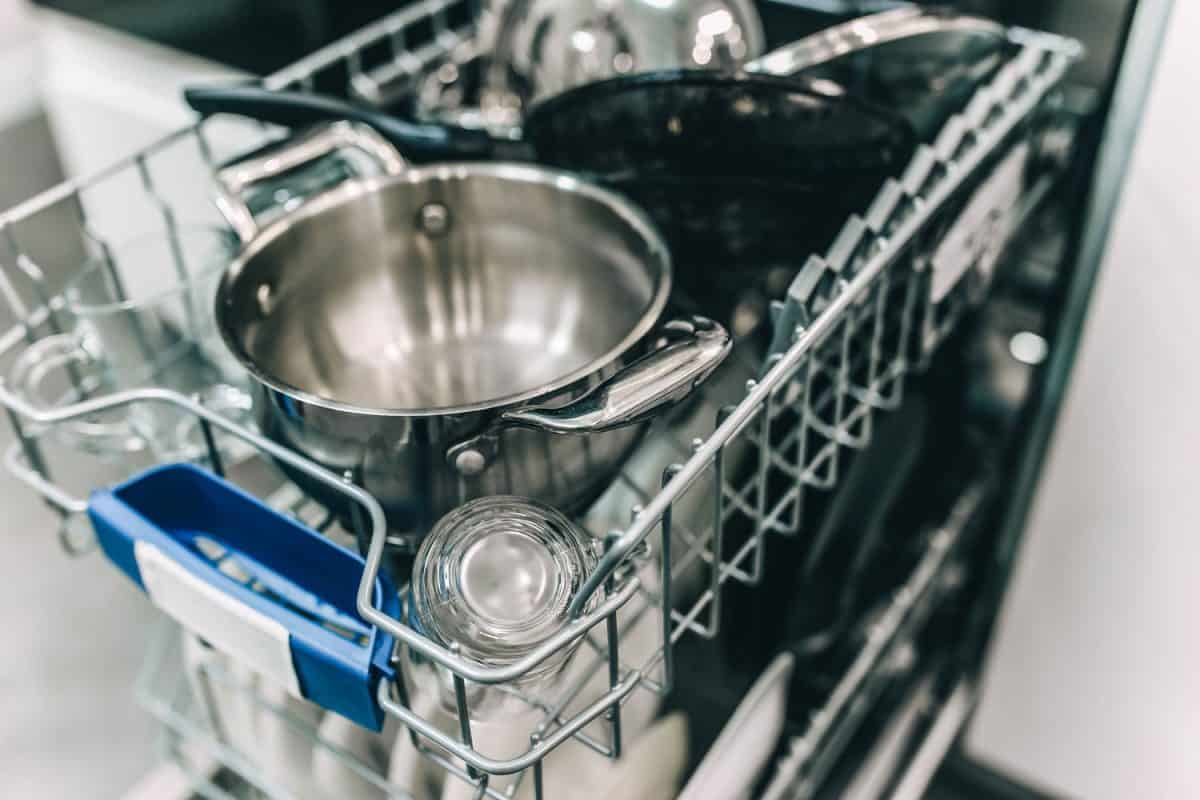
If your kitchen is tight on space, you can tuck your dishwasher underneath the sink. Some dishwasher manufacturers, including General Electric, create dishwasher models with a kitchen's compressed space in mind.
Note that when you choose to use your kitchen's space this way, you're going to have to make a few sacrifices. To begin, you'll likely have to substitute your double-barrel sink for a single-barrel unit. While you can use your dishwasher to clear away the bulk of your dirty dishes, the lack of a second barrel can leave some home cooks feeling bereft.
Under-the-sink dishwashers also tend to be smaller than their freestanding cousins. You'll be able to put your dishwasher to regular use, of course. Be prepared to do the dishes in smaller loads than you may be used to, though.
That said, under-the-sink dishwashers are ideal additions in kitchens that benefit from dish-doing automation on a smaller scale. If you've been looking for a unit to integrate into your kitchen's tight spaces, look no further than a sink and dishwasher combo.
You can find under-the-sink dishwashers like this one on Amazon.
Preparing Your Dishwasher For Long-Term Use
Your kitchen has the potential to become your sanctuary. If you want your kitchen to be as effective as possible, though, you need to keep the space accessible. With that in mind, you can work with area professionals to ensure that your dishwasher is flush with your countertop and cabinets during the installation process. Not only does this decision keep your kitchen looking sharp, but it also retains the space's maneuverability and overall look.
That said, don't be afraid to experiment with your kitchen styling. You can experiment with a portable dishwasher or even gap fixes to both style your space and encourage dishwasher-to-kitchen cohesion.




